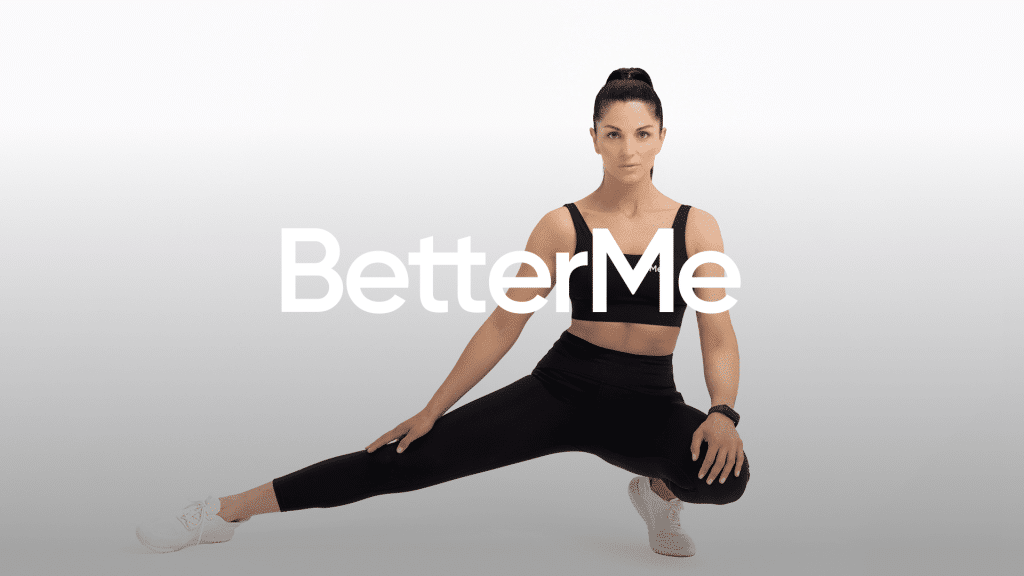In today’s fast-paced, sedentary-centric world, neck and shoulder tension have become common issues that affect many individuals. Whether it’s due to prolonged hours at a desk, poor posture, or stress, the discomfort can significantly hamper your daily life.
This tension usually arises due to a combination of physical and emotional factors (17). Physically, repetitive strain and poor ergonomics contribute to muscle stiffness and pain. Emotionally, stress and anxiety can take the form of tightness in the neck and shoulders, which leads to chronic discomfort.
Despite the strain, the good news is that somatic exercises for the neck offer a promising solution to this widespread problem (8). By focusing on the connection between the mind and the body, somatic exercises help release stored tension and promote relaxation.
In this article, we explore simple, effective ways to release unresolved emotions stored in the neck and shoulders, provide guidance on performing somatic exercises on your own, and take a closer look into the emotional significance of neck tension.
What Emotion Is Held in the Neck?
The neck is an incredibly common area where emotions manifest as physical tension. This connection between emotional stress and muscle tightness has been the center of decades of research. It has been found that emotions such as anxiety, fear, and anger can lead to physical changes in the body, particularly in the neck and shoulders (6). When we experience stress, our bodies often respond by releasing stress hormones(cortisol), which results in the tensing of our muscles due to the ‘flight or fight’ response, preparing us to respond to the stressor. If left unaddressed, this can become a habitual response over time.
According to the American Psychological Association, chronic stress can cause persistent muscle tension, thereby contributing to discomfort and pain (11). Understanding this link is essential for addressing both the emotional and physical aspects of neck tension.
Specific Emotions Commonly Stored in the Neck
- Stress and Anxiety
The most common emotions that manifest as neck tension are stress and anxiety (7). The reason is that when the body is stressed, it goes into a state of heightened alertness, thus causing the muscles to tighten. This response is a protective mechanism but when left untreated, it can lead to chronic pain.
- Fear
Another emotion that can lead to tightening of the neck muscle is fear. This reaction is part of the body’s fight-or-flight response and prepares the muscles for quick action. Over time, if fear is persistent or has been avoided continuously, this tension can become chronic (23).
- Anger and Frustration
Many studies also point to the emotions of anger and frustration causing neck pain (19). These emotions can cause significant physical strain, which can lead to tightness and discomfort.
- Sadness and Grief
Another cause of chronic neck pain is sadness and grief. This translates to a hunched posture, which contributes to neck and shoulder tension (22). These feelings often cause a physical response that includes tightening the upper body muscles.
- Shame and Guilt
For many, emotions such as shame and guilt can cause them to feel a weight on their neck and shoulders. This kind of neck pain is common among people with addictions, as shame leads to and is worsened by the need for secrecy (9).
Some of the most common daily habits that contribute to neck and shoulder tension include (12):
- Working on a computer or a desk
- Using your phone, especially in bed
- Driving
- Carrying a heavy bag or your child on one side
- Watching TV or reading while in an unnatural position
- Your sleeping position
If you wish to reach into the deep crevices of your mind, take yourself out of the mental loop, regain balance, infuse yourself with optimism, and cultivate compassion – BetterMe: Meditation & Sleep app is exactly what you need!
Somatic Exercises to Release Trauma
Somatic exercises focus on gentle mindful movements and awareness to release stored tension. They are performed for short durations with the objective of reconnecting the mind and the body.
This form of exercise creates an awareness of how your muscles feel in various positions and movements (24). It’s based on natural, unintentional movements, such as the stretching that you do when you stand up after sitting for a long time or when you make circles with your feet after you take off a pair of tight-fitting shoes.
How it differs from regular stretching is that the somatic version focuses on the bodily sensations, which can lead to activating your mind through body-centric movements, rather than just performing it to increase flexibility and range of motion.
Here are some effective exercises:
One of the most common somatic exercises is a breathing technique (5). This exercise is performed by lying down on your back with your knees bent and feet hip-width apart on the floor. Get comfortable and take a moment to notice your natural breathing. Start by taking slow, deep breaths, relaxing your abdominal muscles, and letting your lower belly expand as you inhale. Rest your palms on your belly if you want to as you inhale fully and exhale slowly.
After this, you need to place your hands on your rib cage and breathe into the right side of your lungs, then the left, visualizing the air expanding each side. Repeat two more times on each side. Finally, rest your hands on your lower belly, as you breathe into the right and left sides separately. After finishing, notice any changes in your natural breathing.
Another way to release neck tension is through somatic stretching (21). This can be done by performing gentle neck stretches by tilting your head to each side and holding it for a few seconds. Notice any sensations, without any judgment. You can even incorporate shoulder rolls to further loosen the muscles. This movement helps to release built-up tension and improve flexibility. Stretching the neck forward and backward and gently rotating it can also be beneficial.
-
Progressive Muscle Relaxation
In the world of somatic exercises, progressive muscle relaxation has been proven to be extremely beneficial (18). To perform this, you start by tensing up and then slowly releasing each muscle group from the bottom of your feet all the way up to your head. This exercise helps to identify areas of tension and encourages relaxation. Start by curling your toes in, notice the sensation and slowly relax them, noticing how it feels. Then, move to your calves, tighten the muscles, and notice the sensations, slowly relaxing them to notice how the relaxation feels. Continue all the way to your head, tightening and relaxing each muscle group as you notice the sensations.
Read more: Somatic Healing Techniques: A Holistic Approach to Physical and Emotional Recovery
-
Trauma Release Exercises (TRE)
These mind-body exercises require you to perform specific movements designed to induce a tremor mechanism in the body. The result is they release deep-seated tension and trauma (20). This method can serve as self-help. Most of the exercises involve stretching in the standing position or lying flat on your back with your feet together and knees bent out and downward toward the floor.
Somatic yoga poses that focus on the neck and shoulders can also be quite useful for alleviating neck pain. In addition, yoga poses such as the child’s pose, cat-cow stretch, and reclining twist pose can release the spine and release tension in the neck and shoulders (3).
Regularly practicing somatic exercises offers numerous benefits (2):
- Reduced Pain and Discomfort: By targeting the root cause of muscle tension, somatic exercises can make a strong case for reducing chronic pain.
- Improved Mobility: Stretching and movement enhance flexibility, which makes everyday activities easier.
- Emotional Relief: Addressing stored unresolved emotions in the body that are linked to experiencing a traumatic event can lead to a greater sense of emotional well-being and reduced stress levels.
- Enhanced Body Awareness: The concept of somatic exercises is hinged on mindfulness and a deeper connection with your body. Ultimately, it promotes better overall physical and mental health.
Regular practicing somatic exercises for the neck can create lasting changes in how your body processes and responds to stress, which ultimately leads to long-term benefits.
How Can I Do Somatic Therapy by Myself?
One of the main reasons why somatic therapy is an excellent tool is its accessibility. Although somatic therapy such as somatic experiencing (SE) therapy requires the guidance of a trained therapist, some somatic exercises for the neck and shoulder can be done at home, making it inexpensive and best suited for a busy schedule. Here are some steps and techniques to help you get started:
Find a Quiet Space
To practice somatic exercises for the neck, you need to choose a calm and quiet environment where you can focus on your body without distractions. This setting will help you concentrate and be more aware of your bodily sensations. You can even consider playing soft, calming music to increase the level of relaxation.
Start with Somatic Breathing Exercises
Sit comfortably or lie down. Close your eyes and take slow, deep breaths into your belly as it rises and exhale as your belly falls. Focus on the sensation of the air entering and leaving your body.
Body Scanning
Next, you need to perform a body scan to identify areas of tension. Start from your toes and slowly move up toward your head, scanning each body part as you make your way up. Pay attention to any areas of tightness or discomfort without any judgment and breathe deeply into these areas.
Gentle Movements
One of the foremost principles of somatic exercises is to incorporate gentle mindful movements such as shoulder shrugs, neck tilts, and arm circles. Move slowly and mindfully, paying attention to how your body feels with each motion. These movements help release physical tension and promote relaxation.
Somatic Stretching
Integrate stretches that specifically target the neck. For example, gently tilt your head to one side and hold for 20-30 seconds, then switch to the other side, and notice the sensations.
Progressive Muscle Relaxation
As previously mentioned, this exercise involves tensing and relaxing different muscle groups. Hold the tension for a few seconds before releasing and include facial muscles in your routine, as tension in the face can often contribute to neck stiffness.
Visualizations
Visualization techniques have also proven to be beneficial in increasing the effectiveness of somatic exercises (1). Close your eyes and imagine a warm light or soothing wave moving through your neck and shoulders, melting away tension and stress. Visualize your muscles as loose and relaxed, allowing the tension to flow out with each exhale.
If you’ve dipped your toes in meditation before but couldn’t sit through a session because of all the thoughts buzzing in your head, impulses snatching away control or all the overwhelming feelings that start bubbling up the minute you sink into the silence, it’s only because you didn’t have the right guidance. Start using BetterMe: Meditation & Sleep app and watch your life transform!
Daily Routine Integration
The best way to see any results with somatic exercises is by incorporating these exercises into your daily routine, such as during breaks at work or before bed. For long-term benefits, consistency is key. Setting reminders on your phone or integrating these practices into your morning or evening rituals can help ensure regular practice.
Techniques and Tips for Effective Practice
- Consistency is Key
Regularity is the key to achieving lasting results. Even if it’s for just a few minutes, try and incorporate somatic exercises into your daily routine. Consistent practice helps retrain your nervous system to respond more calmly to stress and tension.
- Listen to Your Body
Your body gives you many signals, so pay attention to them. If a movement feels uncomfortable or painful, modify it or try a different exercise. The goal is to promote relaxation. Always prioritize comfort and ease over pushing through pain.
- Combine with Other Relaxation Techniques
Another way of reaping benefits from this form of exercise is to combine it with other relaxation techniques such as meditation, yoga, or tai chi. These practices complement somatic exercises and can provide additional benefits. For example, mindfulness meditation can deepen your connection to bodily sensations (4).
- Remember to Stay Patient and Gentle
Progress may be gradual, particularly if you’ve been dealing with chronic tension. It’s incredibly important to be patient with yourself and avoid forcing any movements or judgment in the practice. Gentle, mindful practice will yield the best results. To stay motivated, celebrate even the small victories.
- Seek Professional Guidance
If you’re new to somatic exercises, consider consulting a somatic therapist or attending a workshop to learn proper techniques. Professional guidance can provide personalized strategies and ensure you’re practicing correctly.
How to Release Emotions Through Somatic Therapy
It’s possible to release the storehouse of emotions in the neck through somatic therapy. Here’s how to go about it:
- Movement and Expression: Somatic therapy such as dance movement therapy (DMT) addresses emotions stored in the neck through body awareness, exploration of movement, breathwork, and expressive movement (25). By guiding you to connect with your body, breathe deeply, and explore different movements, DMT helps release physical tension and facilitates the expression of stored emotions.
- Breathwork: Some somatic breathing techniques that work particularly well for releasing neck tension are ones such as alternate nostril breathing. Experiment with other styles of breathwork, such as the 4-7-8 technique or ‘voo’ breath, and see which format works best for you (13).
- Journaling and Reflection: Write down your emotions. This can be one of the best ways to release them. Journaling helps express and work with your feelings while understanding their impact on your body. Reflecting on your experiences provides insights into the connection between your emotions and physical tension. Use prompts such as “What is causing my tension today?” to guide your reflections (15).
Read more: Somatic Dance: Liberation through Expression and Movement
FAQs
What emotional trauma causes neck pain?
Emotional trauma can trigger physical manifestations such as neck pain through various mechanisms. Stress and tension resulting from trauma can lead to muscle tightness and stiffness in the neck and shoulders. Unresolved emotional issues may manifest as chronic neck pain or exacerbate existing pain conditions. Hypervigilance, which is common in trauma survivors, can contribute to chronic muscle tension, further exacerbating neck discomfort. Individuals with Post Traumatic Stress Disorder (PTSD) may experience neck pain as part of their overall symptomatology due to trauma-related stress and anxiety. Furthermore, the body’s ability to store memories of traumatic events may result in unresolved emotions being physically expressed, including in the form of neck pain. Seeking support from trained professionals who understand the link between emotional trauma and physical symptoms can help address both the physical and emotional aspects of neck pain that stem from trauma.
What is the most effective somatic technique?
Research has shown that somatic experiencing (SE) therapy, which was developed by Dr. Peter Levine (10), has made significant strides in addressing trauma. The method uses body awareness to release the body’s stored unresolved emotions. It involves gently guiding individuals to gradually and safely process the traumatic memories while paying attention to physical sensations.
By doing so, it helps the nervous system discharge the pent-up energy that is associated with experiencing the traumatic event and allows the body to heal back to its natural balance. Somatic experiencing therapy is particularly effective as it addresses the root cause of trauma, rather than just alleviating symptoms, offering a holistic approach to recovery.
How do I start somatic exercise?
Starting your journey with somatic exercises involves just a few easy steps.
- Finding a quiet, comfortable space where you can focus without distractions is important.
- Begin with basic exercises such as body scanning, where you mentally scan each part of your body to note any areas of tension.
- Progressive muscle relaxation is another way of getting started that involves tensing and then relaxing different muscle groups.
- Breath awareness is also essential. Focus on deep, slow breathing to help calm the nervous system.
It’s best to follow guided sessions from a qualified somatic therapist or verified online resources such as BetterMe. Remember, the key is to be consistent, so try to include these exercises in your daily routine.
How long does it take for somatic exercises to work?
Individual experiences with somatic exercises can vary. Some people may feel immediate relief after just a few sessions, particularly if the exercises help them become more aware of their body’s tension and learn ways to release it.
Others may take a few weeks to notice significant changes as somatic exercises often work gradually to retrain the body’s responses and build a deeper sense of awareness and relaxation. It’s recommended that you be consistent with your practice of somatic exercises to see results.
The Bottom Line
Tension in the neck is one of the most common problems that result from poor posture, stress, and emotional trauma. Somatic exercise offers a powerful release of stored trauma and improves body awareness and the mind-body connection.
Through somatic breathing exercises, mindful movements, and targeted stretches, neck and shoulder tension can be effectively addressed and reduced. These practices add physical relaxation and help you process and release trapped emotions, fostering a deeper relationship between the mind and body.
In addition to the emotional and physical benefits of somatic exercises, one of the foremost reasons for their popularity is the ease of access they promise. Inexpensive and easy to do almost anywhere, somatic exercises are a strategic tool that promotes relaxation.
DISCLAIMER:
This article is intended for general informational purposes only and does not serve to address individual circumstances. It is not a substitute for professional advice or help and should not be relied on for making any kind of decision-making. Any action taken as a direct or indirect result of the information in this article is entirely at your own risk and is your sole responsibility.
BetterMe, its content staff, and its medical advisors accept no responsibility for inaccuracies, errors, misstatements, inconsistencies, or omissions and specifically disclaim any liability, loss or risk, personal, professional or otherwise, which may be incurred as a consequence, directly or indirectly, of the use and/or application of any content.
You should always seek the advice of your physician or other qualified health provider with any questions you may have regarding a medical condition or your specific situation. Never disregard professional medical advice or delay seeking it because of BetterMe content. If you suspect or think you may have a medical emergency, call your doctor.
SOURCES:
- 4 Somatic Therapy Exercises for Healing from Trauma (2021, pyschcentral.com)
- 6 Ways Somatic Movement Can Benefit Your Mind and Body (2024, onepeloton.com)
- 7 Simple Yoga Asanas for Neck Pain Relief (n.d., artofliving.com)
- 10 Somatic Exercises To Release Pent-Up Emotions (2024, betterme.world)
- Breathing Techniques (2020, somaticmovementcenter.com)
- Can Emotional Stress Cause Neck Pain? (2021, drnavin.com)
- Depression and anxiety as major determinants of neck pain ( 2009, bmcmusculoskeletdisord.biomedcentral.com)
- Global, regional, and national burden of neck pain, 1990–2020, and projections to 2050 (2024, healthdata.org)
- Health-related shame: an affective determinant of health? (2017, mh.bmj.com)
- How Somatic Experiencing Can Help You Process Trauma (2020, healthline.com)
- How to cope with traumatic stress ( 2019, apa.org)
- How to Release Neck & Shoulder Tension with Clinical Somatics Exercises (n.d., somaticmovementcenter.com)
- How to use 4-7-8 breathing for anxiety (2023, medicalnewstoday.com)
- Humming (Simple Bhramari Pranayama) as a Stress Buster (2023, ncbi.nlm.nih.gov)
- Journaling for Emotional Wellness ( n.d., umrc.rochester.edu)
- Laughter therapy: A humor-induced hormonal intervention to reduce stress and anxiety (2021, ncbi.nlm.nih.go
- Neck pain: global epidemiology, trends and risk factors (2022, ncbi.nlm.nih.gov)
- Progressive Muscle Relaxation (n.d., utoledo.edu)
- Relationship of Pain and Anger in Patients with Back or Neck Pain (2009, e-neurospine.org)
- Tension and trauma releasing exercises for people with multiple sclerosis (2021, ncbi.nlm.nih.gov)
- The 5 Most Effective Neck Stretches and Exercises for Pain Relief ( 2024, goodrx.com)\
- The Association Between Neck Pain and Psychological Distress (2023, ncbi.nlm.nih.gov)
- The prevalence of fear avoidance and pain catastrophising amongst patients with chronic neck pain (2020, ncbi.nlm.nih.gov)
- What Is Somatic Stretching? (2022, everydayhealth.com)
- A Meta-Synthesis of Qualitative Findings About Dance/Movement Therapy for Individuals With Trauma (2015, journals.sagepub.com)













